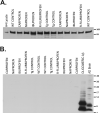Effects of nonsteroidal anti-inflammatory drugs on amyloid-beta pathology in mouse skeletal muscle
- PMID: 20493261
- PMCID: PMC2910117
- DOI: 10.1016/j.nbd.2010.05.018
Effects of nonsteroidal anti-inflammatory drugs on amyloid-beta pathology in mouse skeletal muscle
Abstract
Sporadic inclusion body myositis (sIBM) is a common age-related inflammatory myopathy characterized by the presence of intracellular inclusions that contain the amyloid-beta (Abeta) peptide, a derivative of the amyloid precursor protein (APP). Abeta is believed to cause Alzheimer's disease (AD), suggesting that a link may exist between the two diseases. If AD and sIBM are linked, then treatments that lower Abeta in brain may prove useful for sIBM. To test this hypothesis, transgenic mice that overexpress APP in skeletal muscle were treated for 6 months with a variety of nonsteroidal anti-inflammatory drugs (NSAIDs; naproxen, ibuprofen, carprofen or R-flurbiprofen), a subset of which reduce Abeta in brain and cultured cells. Only ibuprofen lowered Abeta in muscle, and this was not accompanied by corresponding improvements in phenotype. These results indicate that the effects of NSAIDs in the brain may be different from other tissues and that Abeta alone cannot account for skeletal muscle dysfunction in these mice.
Figures








References
-
- Askanas V, Engel WK. Inclusion-body myositis: a myodegenerative conformational disorder associated with Aβ, protein misfolding, and proteasome inhibition. Neurology. 2006;66:S39–48. - PubMed
-
- Beher D, Clarke EE, Wrigley JD, Martin AC, Nadin A, Churcher I, Shearman MS. Selected Non-steroidal Anti-inflammatory Drugs and Their Derivatives Target γ-Secretase at a Novel Site: EVIDENCE FOR AN ALLOSTERIC MECHANISM. J Biol Chem. 2004;279:43419–43426. - PubMed
-
- Dalakas MC. Inflammatory, immune, and viral aspects of inclusion-body myositis. Neurology. 2006a;66:S33–8. - PubMed
-
- Dalakas MC. Sporadic inclusion body myositis--diagnosis, pathogenesis and therapeutic strategies. Nat Clin Pract Neurol. 2006b;2:437–47. - PubMed
Publication types
MeSH terms
Substances
Grants and funding
LinkOut - more resources
Full Text Sources

